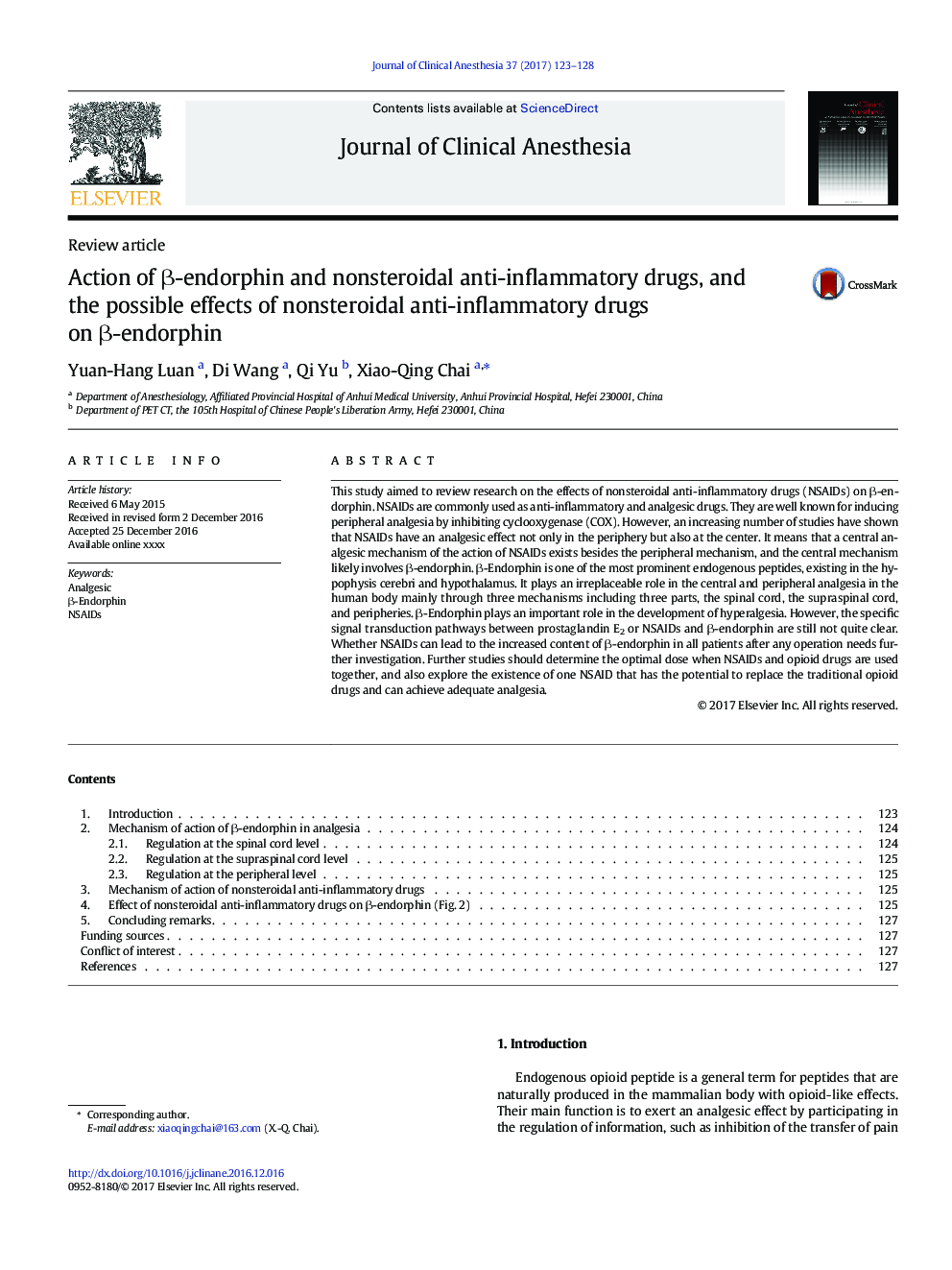| Article ID | Journal | Published Year | Pages | File Type |
|---|---|---|---|---|
| 5582970 | Journal of Clinical Anesthesia | 2017 | 6 Pages |
Abstract
This study aimed to review research on the effects of nonsteroidal anti-inflammatory drugs (NSAIDs) on β-endorphin. NSAIDs are commonly used as anti-inflammatory and analgesic drugs. They are well known for inducing peripheral analgesia by inhibiting cyclooxygenase (COX). However, an increasing number of studies have shown that NSAIDs have an analgesic effect not only in the periphery but also at the center. It means that a central analgesic mechanism of the action of NSAIDs exists besides the peripheral mechanism, and the central mechanism likely involves β-endorphin. β-Endorphin is one of the most prominent endogenous peptides, existing in the hypophysis cerebri and hypothalamus. It plays an irreplaceable role in the central and peripheral analgesia in the human body mainly through three mechanisms including three parts, the spinal cord, the supraspinal cord, and peripheries. β-Endorphin plays an important role in the development of hyperalgesia. However, the specific signal transduction pathways between prostaglandin E2 or NSAIDs and β-endorphin are still not quite clear. Whether NSAIDs can lead to the increased content of β-endorphin in all patients after any operation needs further investigation. Further studies should determine the optimal dose when NSAIDs and opioid drugs are used together, and also explore the existence of one NSAID that has the potential to replace the traditional opioid drugs and can achieve adequate analgesia.
Keywords
Related Topics
Health Sciences
Medicine and Dentistry
Anesthesiology and Pain Medicine
Authors
Yuan-Hang Luan, Di Wang, Qi Yu, Xiao-Qing Chai,
